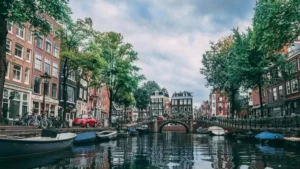What to see in Amsterdam in 3 days (a weekend)?

Amsterdam, the capital of the Netherlands, is a city full of history, culture, and beauty. With its network of canals, world-renowned museums, and a vibrant atmosphere, there’s a lot to explore. Here’s a guide to make the most of your three-day visit.
Day 1: Exploring the Historic Center
Morning: Central Station and Dam Square
Start your adventure at Central Station, an impressive building dating from 1882. From there, head to Dam Square, the heart of the city, where you can admire the Royal Palace and the Nieuwe Kerk (New Church). Take some time to enjoy the atmosphere and maybe try some famous stroopwafels at a nearby café.
Afternoon: Canals and Flower Market
After lunch, stroll along Amsterdam’s canals. The most iconic ones are Singel, Herengracht, Prinsengracht, and Keizersgracht. Don’t miss the floating Flower Market, where you can buy tulip bulbs and other typical flowers.
Evening: Anne Frank House and A’DAM Lookout
Visit the Anne Frank House, a moving place that requires advance booking. End your day at A’DAM Lookout, where you can enjoy spectacular panoramic views of the city at sunset.
Tips for the first day
- 🎟️ Reservations: Buy tickets for the Anne Frank House well in advance
- ⏰ Best time: Visit A’DAM Lookout at sunset for the best views
- 🚶♂️ Getting around: The historic center is perfectly walkable
- 🍪 Food: Don’t miss freshly made stroopwafels
Day 2: Day Trip to the Surroundings
Morning: Zaanse Schans and Volendam
Dedicate this day to exploring the surroundings of Amsterdam. Start with an excursion to Zaanse Schans, famous for its windmills and traditional houses. Then visit the picturesque towns of Edam and Volendam, known for their typical architecture and cheeses.
Afternoon: Return to Amsterdam
Back in the city, you can opt for a canal boat tour to relax while admiring the views from the water. Be sure to visit Rembrandtplein, a lively square ideal for dinner or drinks.
Day 3: Art and Culture
Morning: Museums on Museumplein
Begin your day at Museumplein, home to two of the most important museums: the Rijksmuseum and the Van Gogh Museum. Both offer impressive collections ranging from the Golden Age to modern masterpieces. It’s advisable to buy tickets in advance to avoid long lines.
Afternoon: Jordaan District and Begijnhof
After lunch, explore the charming Jordaan neighborhood, known for its narrow streets and unique boutiques. Don’t forget to visit the Begijnhof, a quiet courtyard that offers a break from the urban bustle.
Evening: Red Light District and Dinner
End your trip with a walk through the famous Red Light District, where you can observe its vibrant nightlife. For dinner, try some local bites at one of the recommended spots like Rob Wigboldus Vishandel.
Tips for the third day
- 🎨 Museums: Buy tickets online in advance
- 📸 Red Light District: Photography is prohibited
- 🚶♂️ Jordaan: Ideal for strolling and discovering local shops
- ⏰ Timing: Visit museums first thing to avoid crowds
Travel back in time at the Rijksmuseum
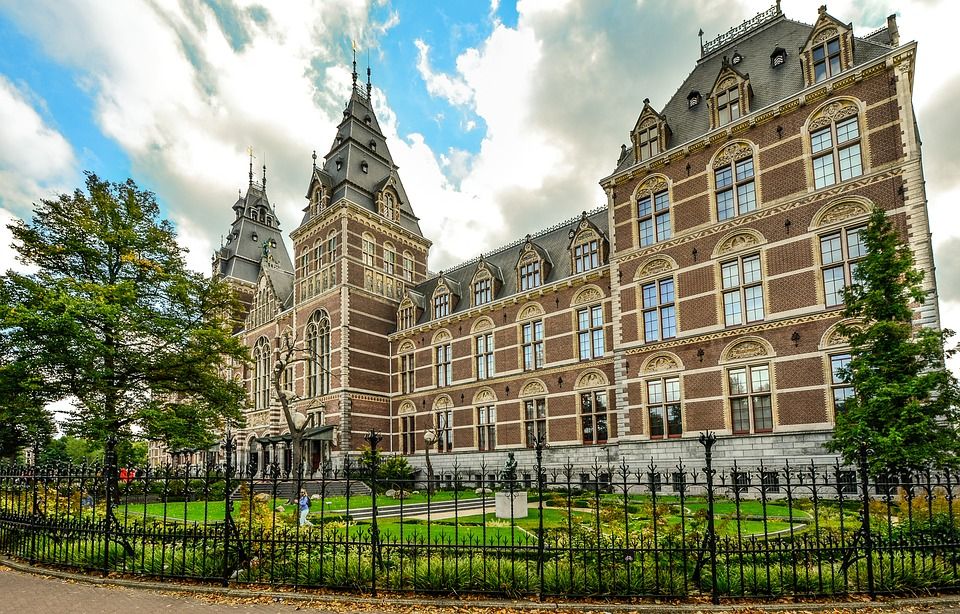
The National Museum of the Netherlands is a must to gain a comprehensive historical overview of the country. You can journey through Dutch history from the year 1100 to the present day via the 8,000 objects displayed in its 80 rooms. Among all the pieces on display, we highlight the collection of dollhouses and the fine Delft porcelain of exquisite beauty.
The paintings of the Dutch Golden Age masters such as Vermeer, Jan Steen, and Frans Hals are among the most visited, especially the climax of this artistic journey: Rembrandt’s masterpiece, The Night Watch.
Top must-see places to visit in Amsterdam
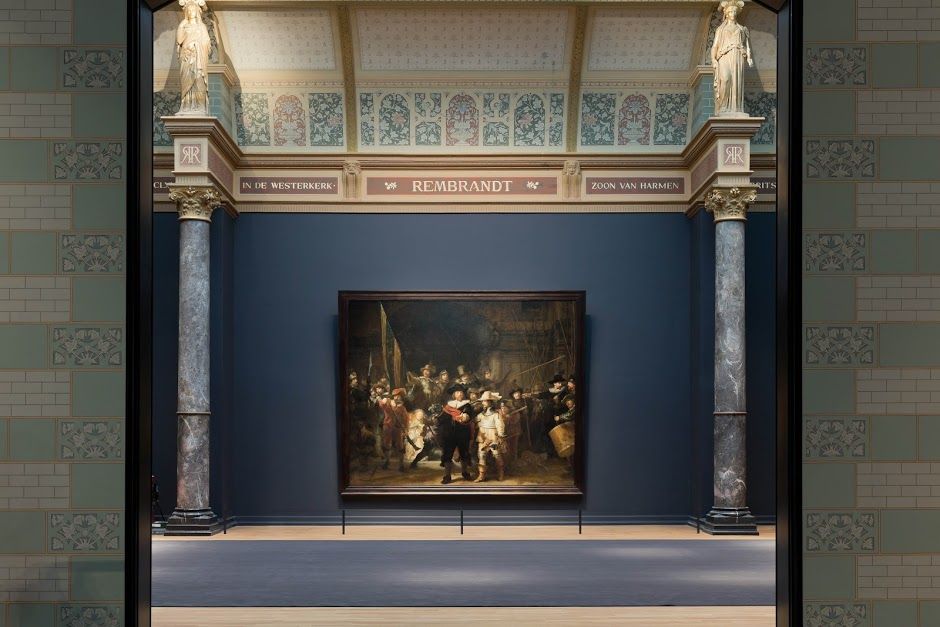
As one of the best museums in the Netherlands, it boasts a collection of paintings from the Dutch Golden Age that is the main draw for the thousands of visitors it attracts daily. Of the more than seven million works the museum houses, three may stand out above the rest:
- The Night Watch (Rembrandt). Possibly the artist’s finest painting—and the very work that left him in absolute ruin. The change in style compared with earlier contemporary portraits marked a radical break. Painted between 1640 and 1642, it depicts a scene of the Dutch civic militia.
- The Merry Drinker (Frans Hals). The Dutch artist created this work between 1627 and 1628, conveying a great dose of optimism.
- The Milkmaid (Johannes Vermeer). One of the author’s best paintings, achieving spectacular realism between the maid’s calm and the very movement of the milk.
Not only are its contents of great interest—the building itself, recently restored, is extraordinarily beautiful. As it’s a very popular museum, we recommend visiting early in the morning to avoid crowds. Buying tickets in advance will allow you quicker access.
Walk and cruise along Amsterdam’s canals
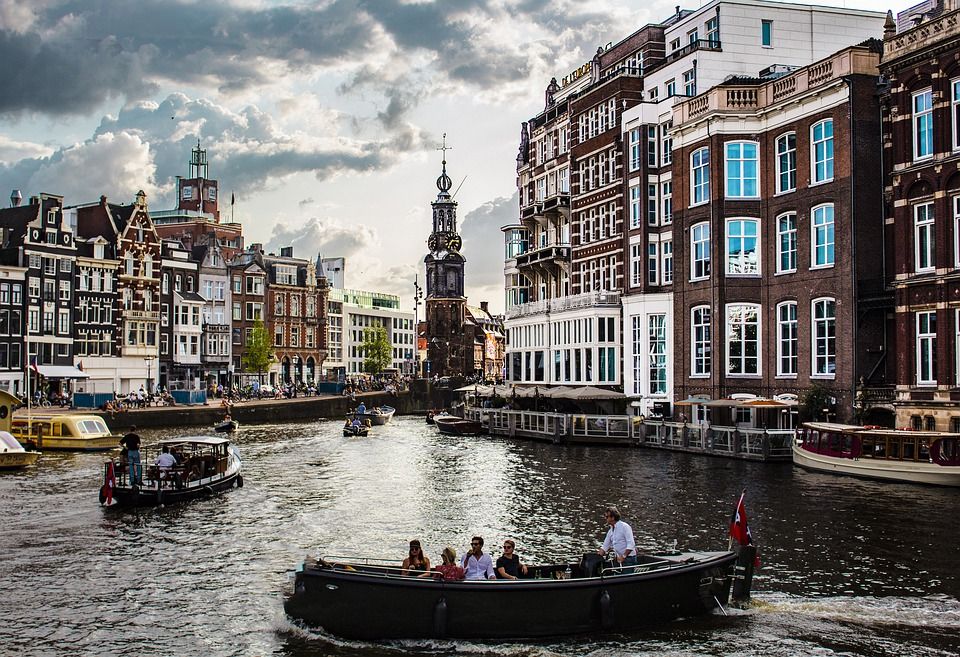
How can you go to Amsterdam and not visit its canals? Impossible! These marvels, declared a UNESCO World Heritage Site, can be visited by land and by water.
A walk along the canals lets you discover the city and its most beautiful buildings at the Gouden Bocht (the Golden Bend), the stretch of the Herengracht canal between Leidsestraat and Vijzelstraat. At the corner of Reguliersgracht and Herengracht you’ll find the Bridge of 15 Bridges. From there, on the odd-numbered side of the houses, you can enjoy one of the city’s most romantic views at dusk. If you don’t make it at that time of day, you can entertain yourself counting the fourteen bridges visible from there. Another must-see is the Magere Brug, one of the most picturesque drawbridges.
Without a doubt, the best way to experience the canals is from the water. There are companies that rent pedal boats or offer small cruises. Quite an experience!
Tips for navigating the canals
- ⏰ Best time: At sunset for the best views
- 🚲 Pedal boats: Available at three main locations:
- Stadhouderskade, 42
- Stadhouderskade, 11
- Prinsengracht, 280
- 🚢 Cruises: Depart every 20–30 minutes from Central Station
Museum of the Canals (Grachtenhuis)
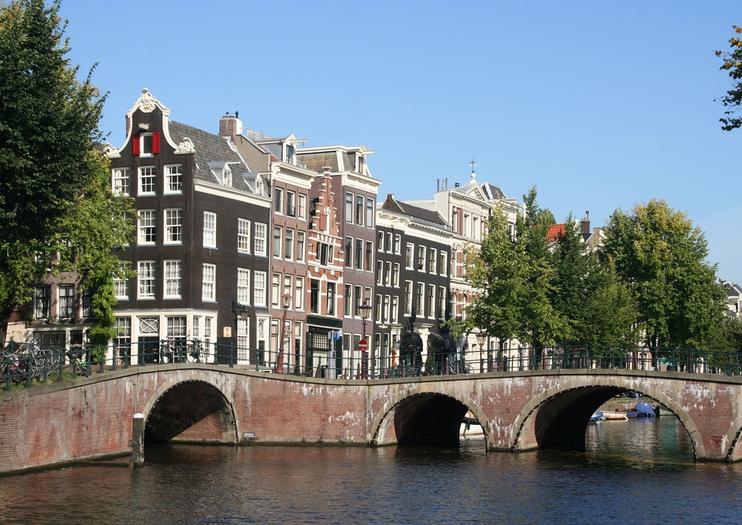
If being near the water isn’t your thing or you want to deepen your knowledge of the canals, you can visit the Grachtenhuis. This museum explains their history with an interactive multimedia exhibition and numerous scale models. The building itself is also noteworthy: since 1663 it has been home to bankers and merchants, including Jan Willink, famed for supporting the Americans in the War of Independence.
Be dazzled by the Van Gogh Museum
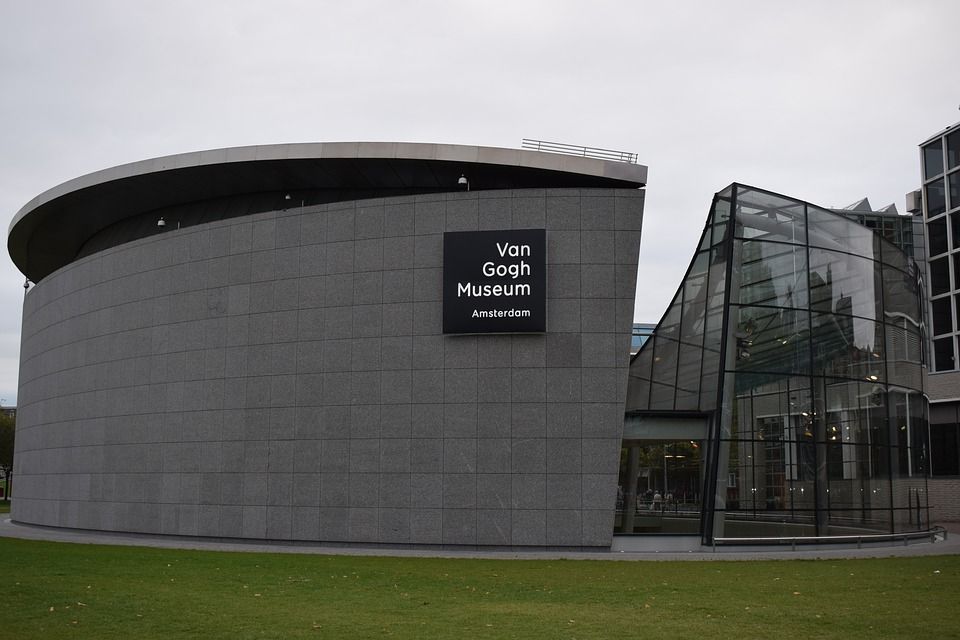
This museum houses the largest collection of works by the 19th-century Dutch Post-Impressionist master. It’s striking that although Vincent van Gogh sold only one painting in his lifetime, he had a major influence on later art and is considered today one of the great masters in the history of universal art.
In the museum’s cutting-edge facilities you’ll find over 200 paintings, 500 drawings and sketches, as well as a large number of Van Gogh’s letters. If you want to learn the artist’s story, the first floor tells his life through his paintings. Works are arranged chronologically so you can observe his evolution, from rural landscapes to more tragic pieces at the end.
There’s also another floor dedicated to research on Van Gogh’s paintings as well as to some works believed to be his but not definitively proven. On the third floor, a collection of 19th-century works by other authors shows the relationship to Van Gogh’s oeuvre.
Be amazed by the houseboats
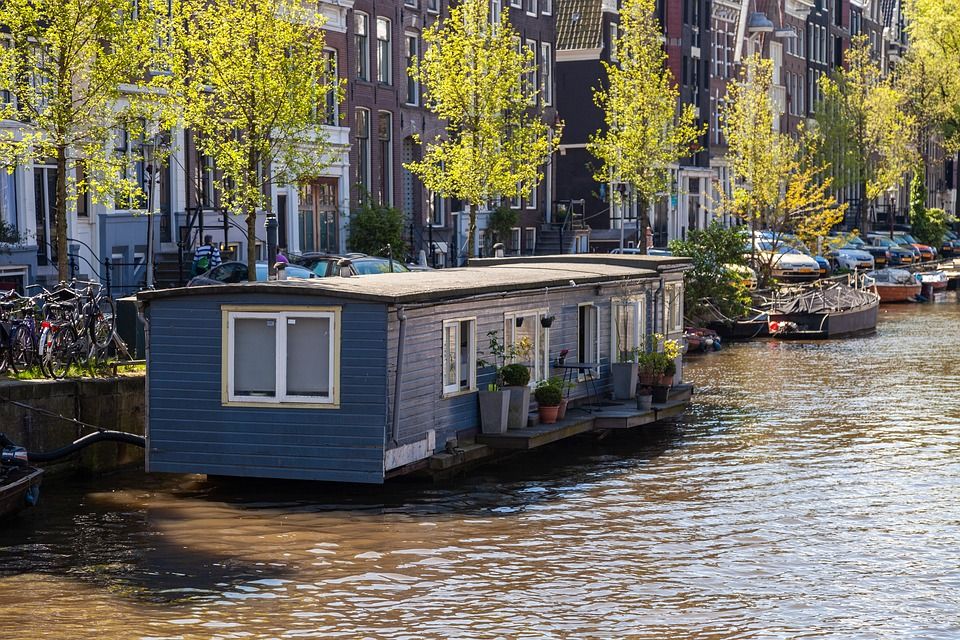
Amsterdam is known for its canals, its artistic heritage, and its houseboats. Today there are more than 2,500 floating homes. This particular way of living arose after World War II due to a housing shortage. At that time the Dutch fleet was modernized and many cargo ships became available to be used as homes. At first, only hippies dared live there. Over time, however, it became a common and normal habitat for Amsterdam residents.
Houseboats are boats modified to be used as homes. In recent years, architectural projects have been developed with this premise and there are now residential neighborhoods floating on the water. There’s no doubt the Dutch have skillfully adapted to the topographical conditions that prevail in their country.
Interesting facts
- 🏠 Total number: More than 2,500 floating homes
- 💰 Costs: Cheaper than traditional houses, but with higher maintenance expenses
- ⚓ Maintenance: Full check-up every 3–4 years in the shipyard
- 🏘️ Recommended neighborhood: IJburg, with modern houseboats
Feel like you’re in a fairy tale in Volendam
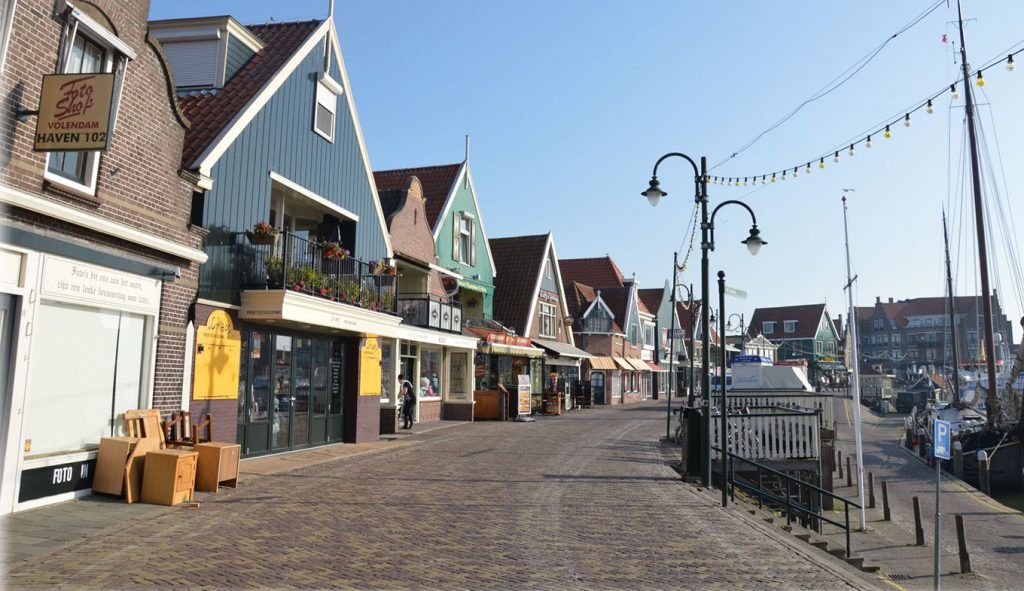
The Netherlands are famous for their canals. In addition, the country has unique architecture and cycling is a very common and convenient mode of transport. The places you’ll find in the Netherlands are incredibly fascinating. To get a close look at its history, it might be good to allow at least 3 days to visit the most emblematic places such as the Keukenhof Gardens, “Old Holland,” where you’ll find the village of Volendam.
Near Amsterdam and near Lake Ijcel you’ll find the old fishing village of Volendam. Many of its inhabitants are Catholic, and at the Volendams Museum you can see traditional Dutch costumes as well as rooms from the last century with their original layout. You can also admire ship models, paintings, and other works of art.
Be moved at the Anne Frank House
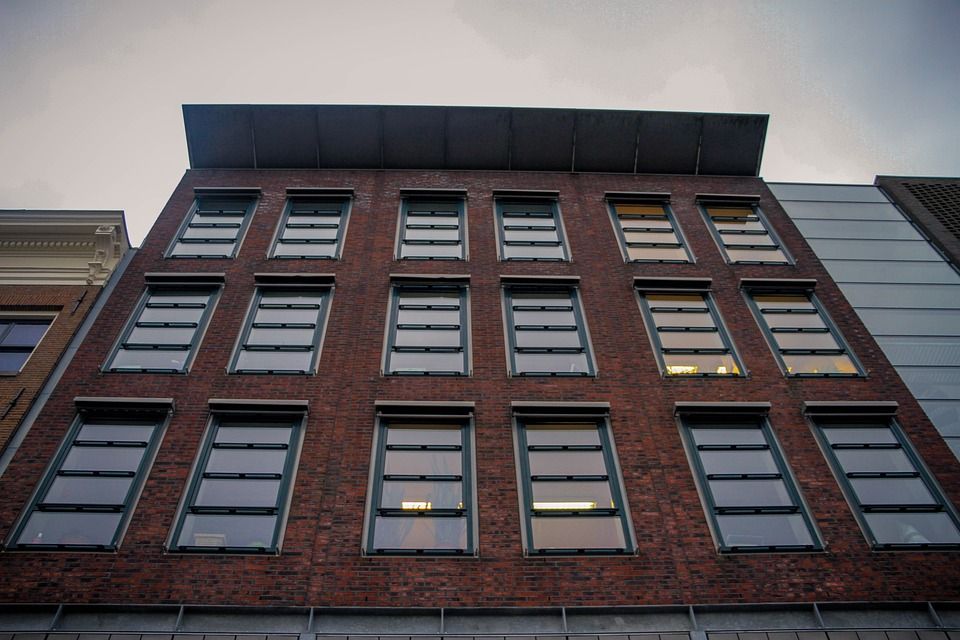
The famous Anne Frank was a girl who lived in hiding in this house with her family and two other families during the Nazi occupation, from June 1942 until August 1944, when they were discovered and deported to different concentration camps. No member of the family survived except the father, Otto Frank. Anne was 15 at the time. The teenager’s experiences during that period were described by herself in a diary, the celebrated Diary of Anne Frank, later published and turned into a moving testimony.
At the house-museum you can visit the apartment where the three families were hidden during those years. The furniture was confiscated when they were arrested, but fragments of the diary manuscript, photographs, documents, and personal objects are on display, giving a vivid idea of what happened in those rooms.
TIP
If you want the chance to visit the house, you must buy tickets online well in advance through the official website. It’s one of Amsterdam’s most visited museums and tickets sell out quickly.
Be curious in the coffeeshops
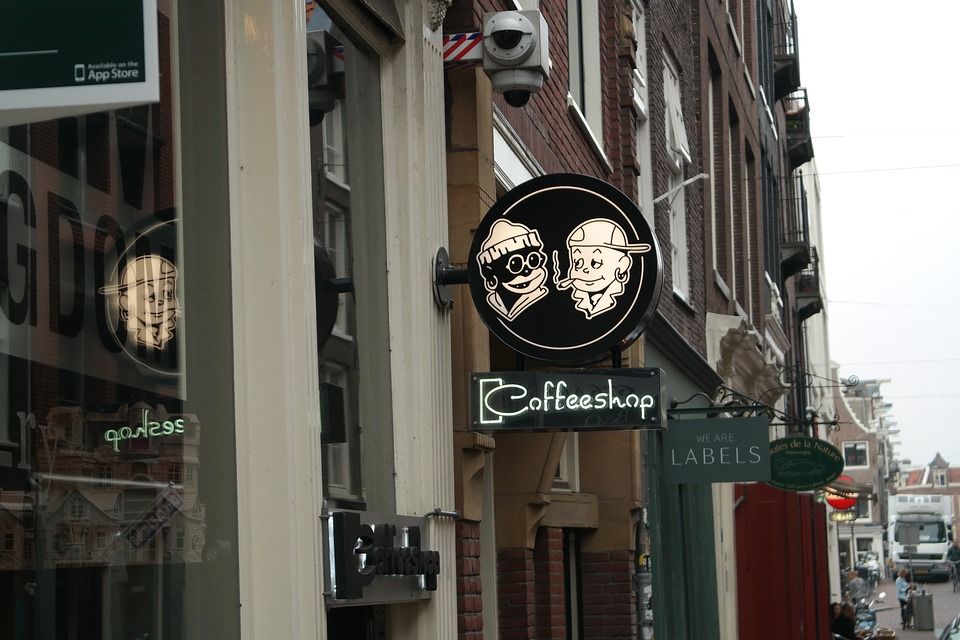
Dutch coffeeshops are cafés where the sale of marijuana and derivative products is permitted. However, the sale and consumption of alcohol is prohibited there. Besides being cafés, they also serve as meeting and leisure spaces, as well as places for marijuana consumption. This coffeeshop setup is possible due to the Dutch drug policy and under certain conditions.
Important regulations
- 🔞 Minimum age: 18 years
- 📋 Regulations:
- Advertising prohibited
- Maximum 500 grams in stock
- No alcohol sales
- 📍 Location: Cannot be within 350 meters of schools
Breathe the peace of the Begijnhof
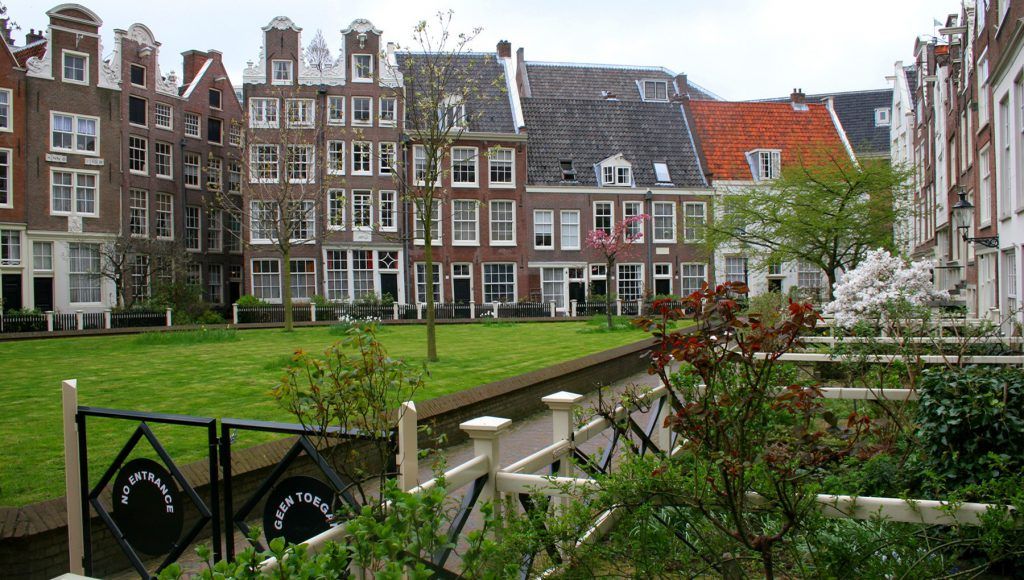
The Begijnhof is a courtyard surrounded by modest houses where the Beguines, a community of women, lived under a vow of chastity without being nuns. After Catholicism was banned in the 16th century, the Begijnhof continued to exist, as the houses were—and still are—privately owned, but the chapel was closed. Later, a clandestine church was built that still exists and can be visited.
Legend has it that the Beguine Cornelia Arens wanted to be buried in the courtyard’s sewer. Despite her wish, when she died she was buried in the church. The next day and thereafter, the coffin mysteriously appeared in the sewer until the Beguines gave up and left it buried there.
Today, although the last Beguine has passed away, the houses are still inhabited and visitors must respect the residents’ peace and privacy: photography is not allowed, you must stay on the visitor paths, and avoid unnecessary noise.
One house stands out as the only remaining wooden house in the city: the Houten Huys, built in 1528.
Get to know the reality of the Red Light District
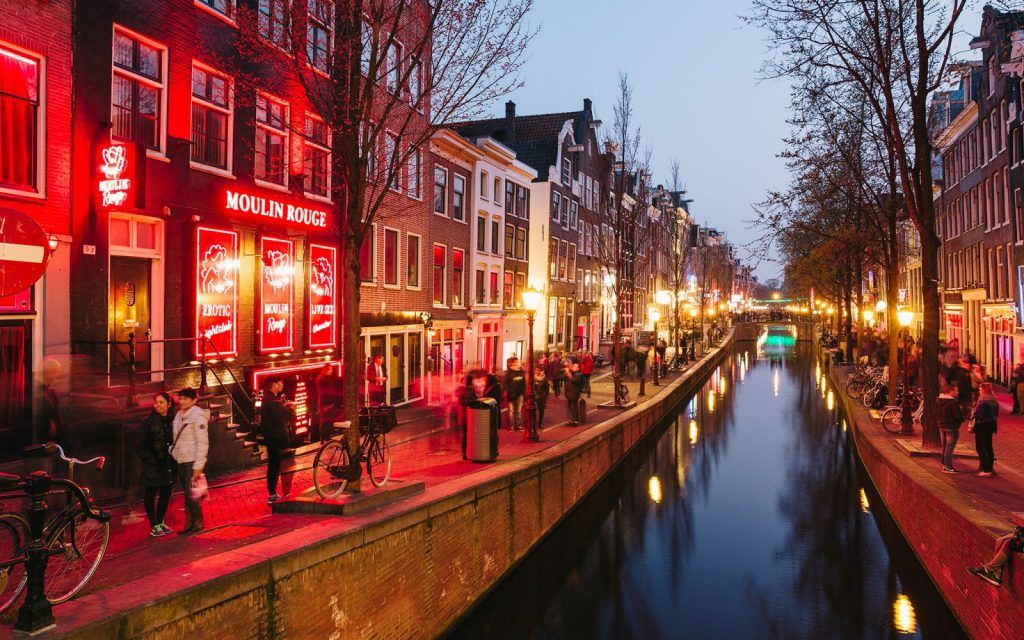
The history of the Red Light District, famous for window prostitution, is very old. The neighborhood owes its name to the red lights that were once used as a lure for clients behind window curtains.
One of the most interesting things to do here is a visit to the Prostitution Museum, where you’ll learn a lot about this activity and can even put yourself in the place of the workers—in one of the windows.
What to see and do in Amsterdam’s Red Light District?
It’s important to know that in 2018, tourist visits began to be regulated with very strict rules to protect the privacy and safety of the workers. It is strictly forbidden to take photos, stand in front of doors or windows, peek through curtains, behave aggressively, be drunk, or bang on the glass of the windows. These rules are part of a broader and deeper plan to regulate legal prostitution in the city.
Important tips
- 📸 Photography: Completely prohibited
- 👨👩👧👦 Families: Not recommended for visits with children
- ⏰ Prostitution Museum: Open daily from 10:00 to 00:00
- 🔞 Age: Adults 18+ only
Learn all about beer at the Heineken Experience
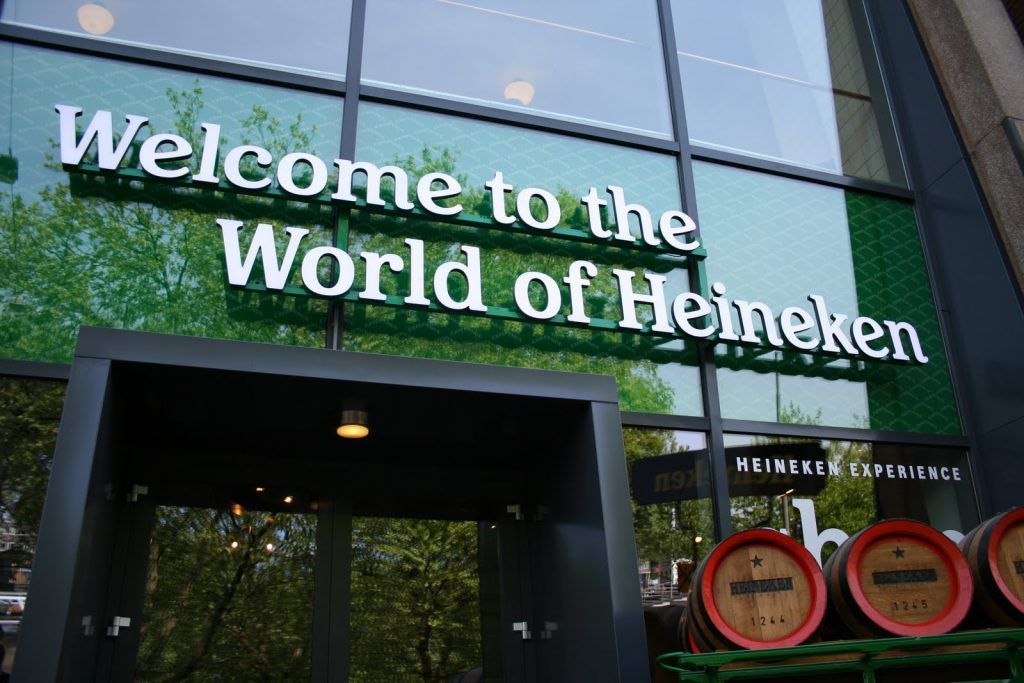
In the former Heineken brewery, closed since 1988, there’s an exhibition where you can learn about the beer-making process, the brand’s history, and taste some of its varieties.
The building has undergone several renovations since it was built in 1867, mainly to adapt it to the museum model it is today. Even so, the essence of the main rooms remains intact, and you can see the huge vats where Heineken was brewed.
On the tour you can touch the ingredients used to brew the beer today, as well as follow the path the bottles take before distribution. To that end, there’s a 4D video showing the different stages each element of the chain goes through.
TIP
For a better experience, book your ticket in advance through the official website. Minors must be accompanied by an adult and will receive a soft drink instead of beer.
Brighten your day at the Flower Market
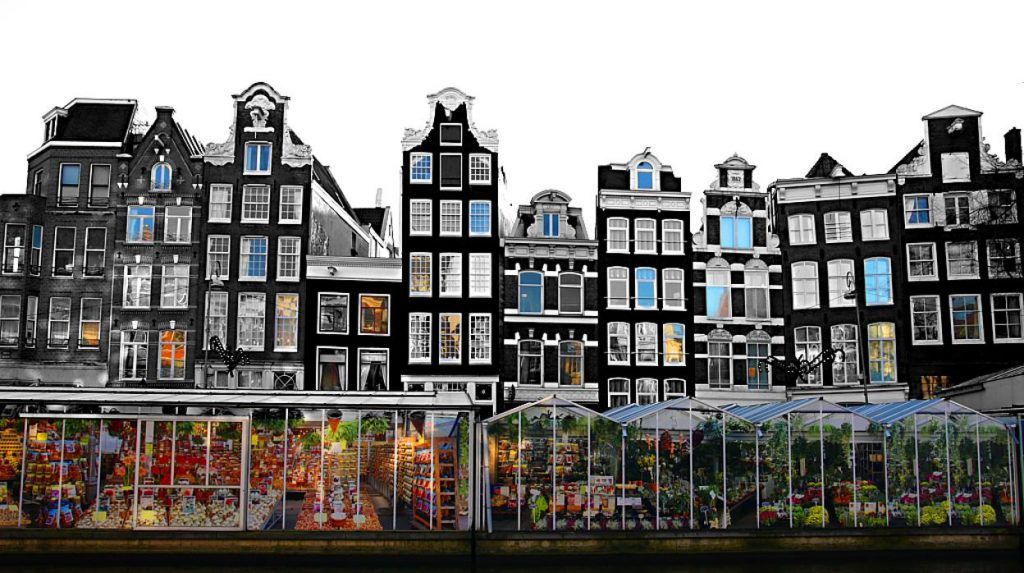
This curious floating market originated in 1862, when growers came by boat into the center to sell their flowers. Over time, these boats became moored permanently on the Singel canal and small greenhouses began to be built on top.
It’s locals’ favorite place to buy fresh flowers any time of year. Nowadays there are more and more souvenir shops, but there’s no more typical Dutch souvenir than a handful of bulbs of your favorite tulip.
Practical information
- 📍 Location: Singel canal
- 🚊 How to get there:
- Koningsplein tram stop: lines 1, 2, and 5
- Muntplein tram stop: lines 4, 9, 14, 16, 24, and 25
- ⏰ Hours:
- Monday to Saturday: 9:00 to 17:30
- Sundays: 11:30 to 17:30
Admire the monuments of Dam Square
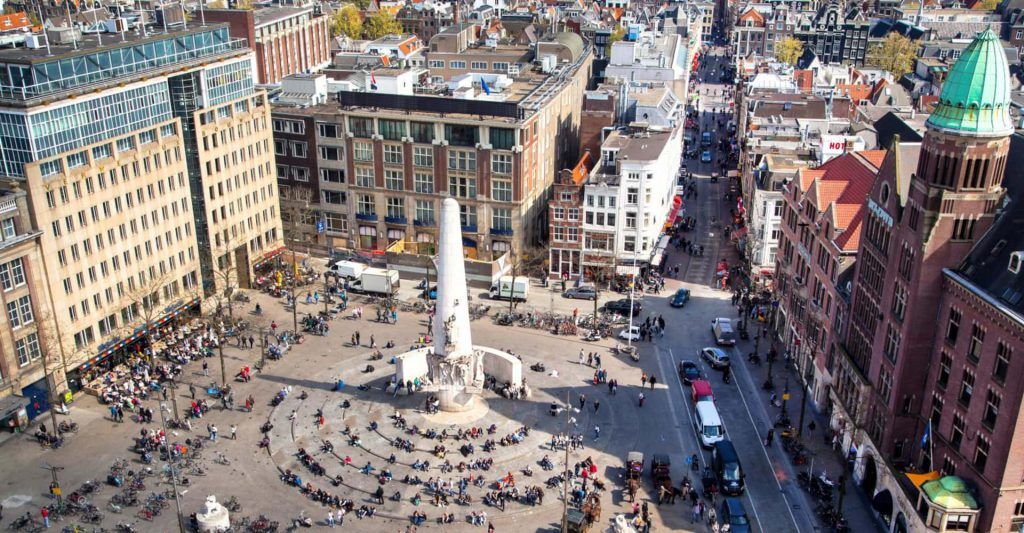
This is the city’s most famous square and home to the Royal Palace and the National Monument. Without a doubt, it’s one of the areas of Amsterdam worth spending at least a few hours—or even an afternoon—given everything it offers travelers on both a cultural and historical level.
Royal Palace
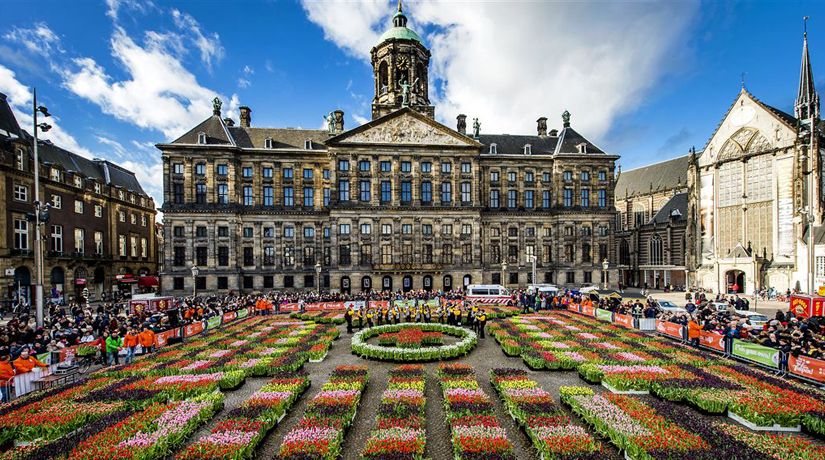
The Royal Palace of the Dutch monarchs was the former city hall. The imposing building, constructed during the Golden Age, was inaugurated in 1655 and only two centuries later was converted into a palace. Today it hosts receptions and other events, but it’s also open to visitors who can see what royal life was like, among marble galleries, numerous sculptures, and period paintings.
National Monument

Across the square you’ll find the Nationaal Monument, a memorial to the victims of World War II. Every May 4th, on Nationale Dodenherdenking (Remembrance of the Dead), the royal family lays a wreath in memory of the victims of war worldwide and two minutes of silence are observed.
The square is a national symbol where you can always see hundreds of people strolling—either visiting or enjoying a drink in the surroundings.
Find treasures in Spui Square
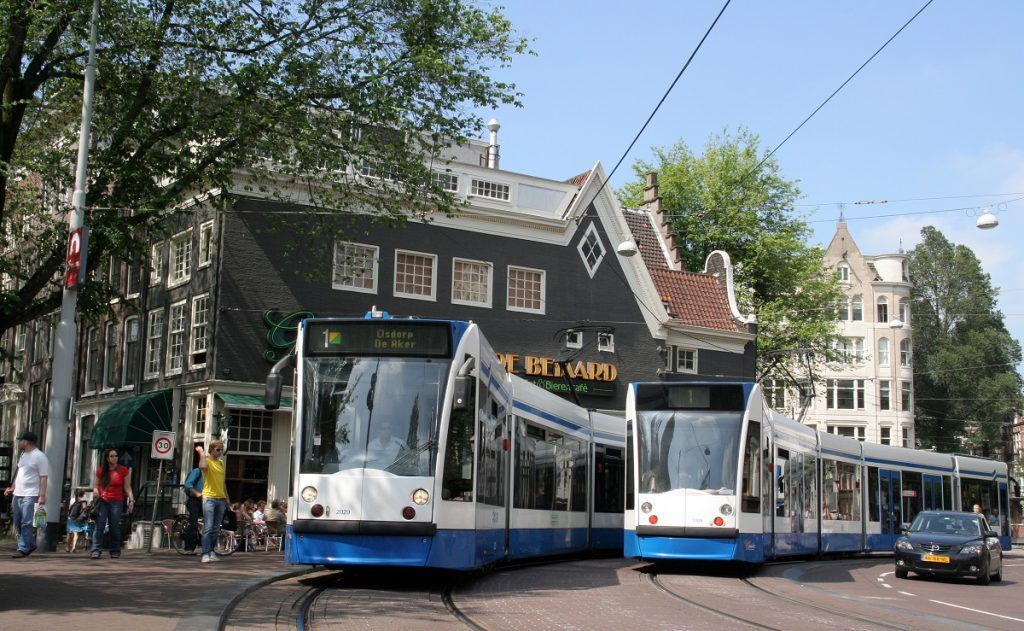
The attraction of this central square is its art and literature markets. Every Sunday from March to December the art market opens, and every Friday there’s a book market. It’s a great opportunity to buy artworks directly from the creators, as well as find that special book among the piles of literature on offer.
The art market operates on a rotation system, so you almost never see the same artists each week. An authentic work of art bought from a local artist is the best souvenir you can imagine.
The book market is a meeting point for writers, readers, and collectors. On other days there’s still intellectual activity in the square, as it’s home to three popular bookstores, a publishing house, and a space for literary events. The surrounding cafés are frequented by authors and other cultural figures.
Discover the Oude Kerk, the oldest church
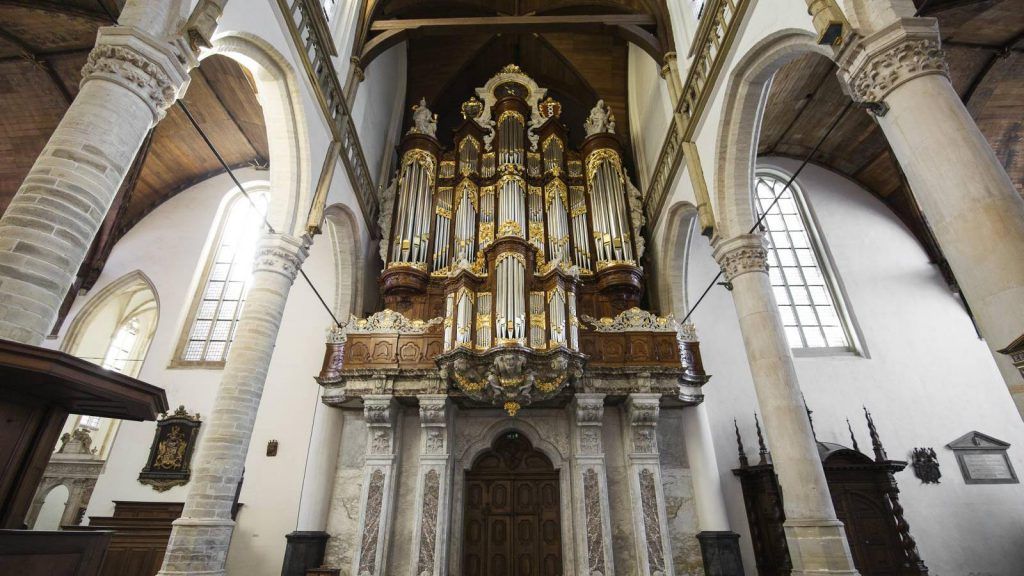
This church, located right in the Red Light District, is the oldest in Amsterdam. Its origin can be traced back to 1213, when a small wooden chapel stood on the site, used by local sailors and fishermen. Later, in 1306, it was officially consecrated to Saint Nicholas, their patron. Over time the building changed and expanded into the beautiful church we can admire today. Note that it was first a Catholic temple and later Calvinist, so it suffered all kinds of lootings and damage, but it remains part of the city’s life and soul.
The beauty of its stained glass windows, the curious collection of miniature ships recalling its maritime origins, the lovely medieval paintings on the wooden vault, and the decorative organs make this a very special church well worth a detailed visit.
In 2016 the Oude Kerk took a turn toward modernity and became an exhibition space where both local and foreign artists are invited to exhibit and create their works in this unparalleled setting steeped in history.
TIP
Visit the church early in the morning to avoid crowds and enjoy the light through the stained glass. Audio guides are available in several languages to help you better understand the building’s rich history.
Live like a 17th-century painter at the Rembrandt House Museum
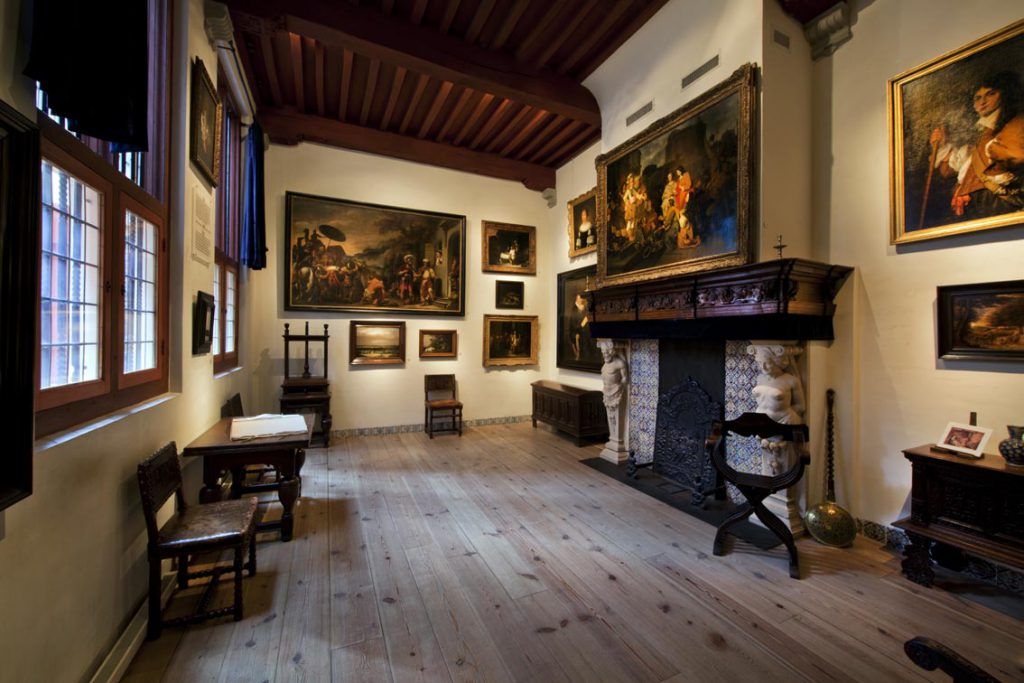
If you want to know how the painting genius lived, this is the place for you. Because he was evicted in 1658 and an inventory was made of all the objects in the house, a fairly faithful recreation has been possible.
Going inside is like taking a little instant trip back in time. You can also see paintings by several of Rembrandt’s contemporaries, his master Pieter Lastman and his pupils, etchings by the artist himself, and other temporary exhibitions.
The artist’s most famous work is at the Rijksmuseum, The Night Watch, but here you can see the room where he painted many of his works, and admire a house restored to resemble the period, with contemporary furniture and paintings by other artists of the time.
How to get to Amsterdam
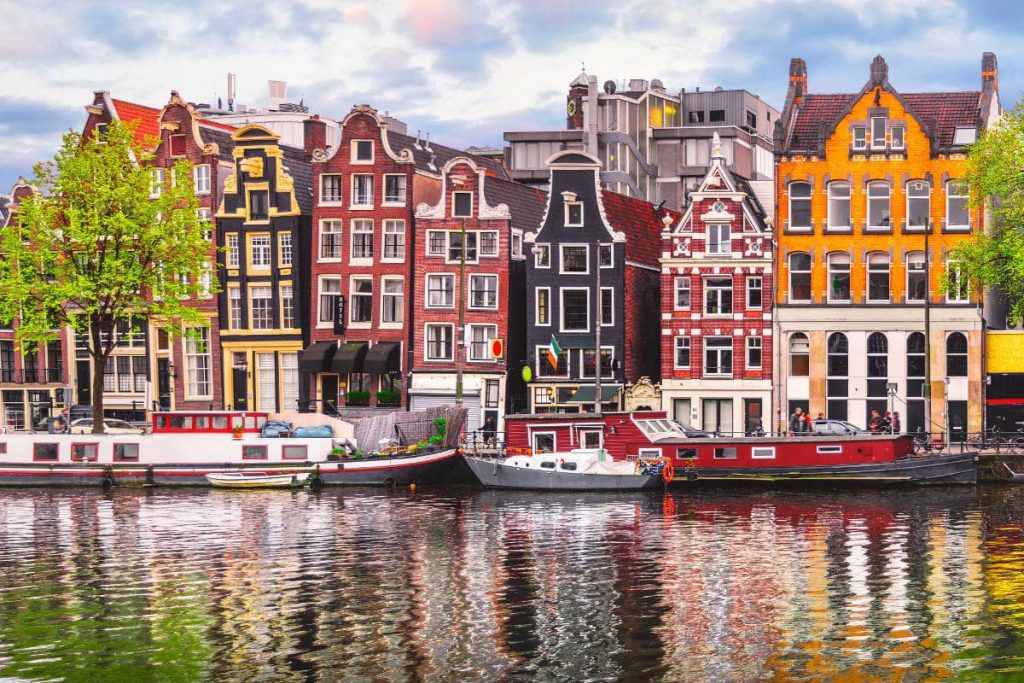
Amsterdam is one of the best-connected places in Europe. This makes it easy to figure out how to get to Amsterdam, the Dutch capital—by air, sea, or land. Choose the option that best suits your starting point and enjoy this wonderful city.
Amsterdam is distinguished by its lovely parks where you can stroll at leisure. In addition, the city is easy to explore by bicycle, as long as you’re used to riding one. It has a wide cultural offering, with the Van Gogh Museum standing out among others. Its design, with semicircular canals, makes this city a dream for travelers.
Traveling by plane
If you arrive in Amsterdam by plane, you’ll land directly at Schiphol International Airport, as it’s the only one within the city. Traffic here is impressive from any destination in Europe or the rest of the world. Located approximately 22 km from the center, it’s a very affordable and convenient way to reach the city, as flights are not usually very expensive.
You can also fly into Rotterdam Airport, less than an hour’s drive from Amsterdam. Another option is Eindhoven Airport, 121 kilometers away, i.e., 1 hour and 15 minutes from Amsterdam.
Transport options
- ✈️ Nearby airports:
- Schiphol (main) — 22 km from the center
- Rotterdam — 1 hour by car
- Eindhoven — 1 hour and 15 minutes
- 🚆 Train: Direct connection from Schiphol to the center
- 🚌 Bus: Regular service from all three airports
Traveling by bus
This alternative lets you take a bus from anywhere in Europe. You arrive at Amsterdam Centraal Station, located right in the city center and connected to all public transport.
Traveling by train
It’s considered the king of transport, since Amsterdam is very well connected—with cities throughout the Netherlands as well as other European capitals. The station is the same, Amsterdam Central Station. As you can see, it’s the city’s main gateway.
Traveling by car
The drive is over 1,700 km from Madrid and almost 1,600 km from Barcelona, about 16 hours on the road. If you add rest stops, it could take around 21 hours. Another option is to rent a car from a nearby city and tour Amsterdam as well as nearby towns. Be sure to check paid parking to avoid fines.
Traveling by boat
This option is only possible on a North Sea cruise arriving at the Amsterdam Passenger Terminal (PTA) on the River IJ.
How to get from the airport to central Amsterdam
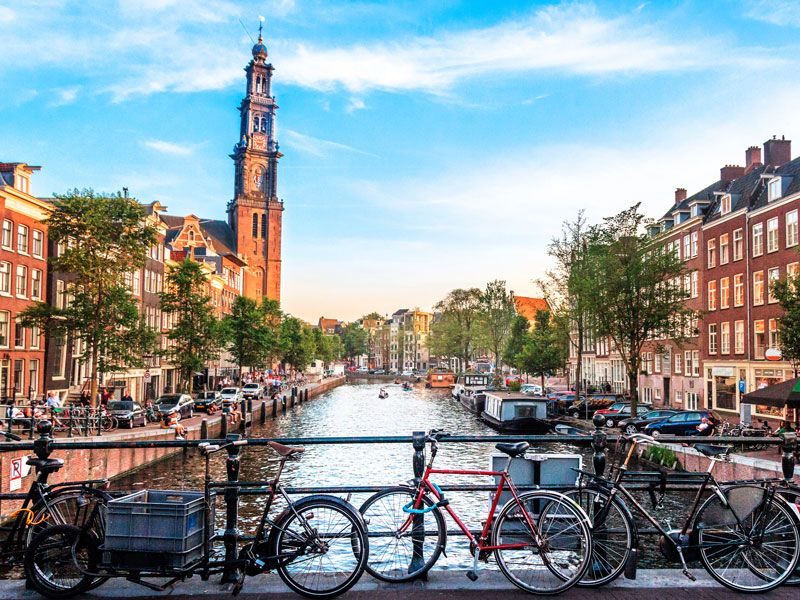
If you’ve chosen to fly to the Dutch capital, you should know the options for getting from the main airport to the city center.
By train
The train is the best option. Downstairs in the airport there’s a train station with routes to the city center. The journey takes around 20 minutes and stops at Amsterdam Central Station.
By express bus
Buses are another good way to reach the center, although they’re slower and a bit more expensive than the train. Line 397 takes travelers from the airport to central Amsterdam during the day, and at night the N97 does the same.
By taxi
The most expensive option, though of course the most comfortable. Not recommended if you’re trying to save money.
Best free tours in Amsterdam
Join us on an exciting journey along the beautiful canals of Amsterdam and find out what makes Amsterdam so Absolutely…
👋 Discover Amsterdam Like a Local – In Just One Tour! ★★★★★ Trusted by Over 20.000+ Visito…
ABOUT THE TOUR A one and a half hours walk around the central area, with a professional, friendly and …
Get ready for a once-in-a-lifetime experience where the secrets of the Red Light District will unfold as you walk through…
This walk will take you along the medieval city walls of Amsterdam. It also happens to be one of the…
Step into one of Amsterdam’s most unforgettable experiences, a powerful walking tour that brings Anne Frank’s story to life wh…
👋 Welcome Travelers! As we stroll at a relaxed and comfortable pace through Amsterdam’s vibr…
Frequently Asked Questions about Amsterdam
When is the best time to visit Amsterdam?
The best time to visit Amsterdam is April–May (spring) or September–November (autumn). During these months, the weather is pleasant and there are fewer tourists. Spring is especially beautiful with the tulip fields in bloom. Summer (June–August) is high season with more tourists and higher prices, while winter (December–March) is cold but offers special charm with Christmas markets and canals that occasionally freeze.
How many days do you need to visit Amsterdam?
We recommend a minimum of 3 days to visit the most important places in Amsterdam, as detailed in our 3-day guide. This will allow you to see the main museums, stroll along the canals, visit the Anne Frank House, and explore different neighborhoods. If you have more time, you can take excursions to nearby towns such as Volendam or Zaanse Schans.
Do you need to buy museum tickets in advance?
Yes, it’s highly recommended to buy tickets in advance, especially for the Van Gogh Museum, the Anne Frank House, and the Rijksmuseum. These are the most popular museums and often have long lines. The Anne Frank House in particular requires prior reservation, as tickets sell out weeks in advance.
How do you get around Amsterdam?
Amsterdam is perfect for getting around on foot or by bike. The historic center is compact and most attractions are within walking distance of each other. It also has an excellent public transport system including trams, buses, and metro. You can purchase the I Amsterdam card or multi-day public transport tickets.
Is it safe to visit the Red Light District?
Yes, the Red Light District is safe for visitors, but it’s important to follow the rules: don’t take photos, respect the workers, and don’t cause disturbances. The area is heavily monitored and safer due to the constant presence of tourists and police. However, it’s not recommended for family visits with children.

